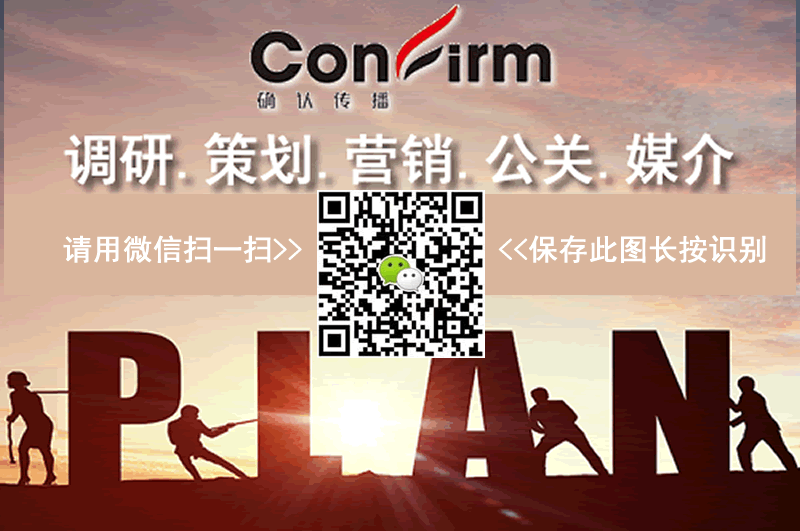
简单 3 步配置 Google Play Billing | 系列分享
时间:2021-07-15 | 标签: | 作者:Q8 | 来源:Google Play网络
小提示:您能找到这篇{简单 3 步配置 Google Play Billing | 系列分享}绝对不是偶然,我们能帮您找到潜在客户,解决您的困扰。如果您对本页介绍的简单 3 步配置 Google Play Billing | 系列分享内容感兴趣,有相关需求意向欢迎拨打我们的服务热线,或留言咨询,我们将第一时间联系您! |
销售数字内容是许多Android应用的主要营收渠道。具体形式包括销售应用内的特定商品(如游戏金币)以及订阅计划(比如允许用户在限定时间内访问高级功能)。Google Play Billing作为一个数字内容销售的工具和服务的集合,可以帮助开发者在Android应用中销售线上商品。 本文将从基础知识开始,带大家逐步深入,详细了解Google Play Billing 3,及其用例和最佳实践。 首先,我们来熟悉一下Google Play Billing的一些关键组件。 Google Play管理中心(Google Play Console)-Google Play管理中心既是Android应用发布平台,也可以用于设置应用中销售的各种内容。在Play管理中心可以配置待出售的商品,包括价格点,以及针对每个产品进行高级配置,如提供订阅的免费试用期; Google Play Billing Library-这是您集成到Android应用中的开发库。使用此库连接Google Play就可以执行各种与销售相关的任务,例如在用户购买商品时处理购买流程; Google Play Developer API-一组REST API,可用于与Google Play通信。使用这些API可以查询和管理应用销售的商品。这些API还可以验证用户的购买中是否存在欺诈行为,或者检查订阅是否仍处于有效状态。 Google Play管理中心 https://developer.android.google.cn/distribute/console Google Play Billing Library https://developer.android.google.cn/google/play/billing/billing_library_overview Google Play Developer API https://developers.google.cn/android-publisher 了解了Google Play Billing的关键组件之后,我们将从头介绍如何设置环境并开始在Android应用中销售商品。 1.设置Android应用以使用Google Play Billing开发库 第一步,也是最重要的一步,是设置Android应用以使用Google Play Billing开发库。 向app/build.gradle文件中添加以下依赖关系,在应用中实现Google Play Billing: implementation‘com.android.billingclient:billing:3.0.0’ 添加库依赖关系后,为应用构建一个发布版APK,并将其上传到Google Play管理中心。 2.添加应用内产品 上传APK后,可以使用Google Play管理中心开始添加要在应用中销售的应用内产品。在"商店发布(Store Presence)"下,有一个设置应用内产品的部分。在这里可以设置两种类型的商品: 托管产品(或一次性购买) 订阅 创建新的托管产品和订阅时,需要输入商品的产品ID(Product ID)或SKU。这个产品ID后续将在应用代码中使用,我们稍后会讲到。在创建托管产品之前,应慎重规划产品ID。产品ID在应用中必须唯一,并且在创建后无法更改或重复使用。 为了使测试更快、更简单,您可以将您的Google帐号添加到Google Play开发者帐号的"许可测试(License Testing)"中。这样,只要软件包名称与Play Store中的APK匹配,就可以使用调试版本和调试签名进行测试。 将Google帐号添加到Google Play开发者帐号的"许可测试(License Testing)"中 https://developer.android.google.cn/google/play/billing/billing_testing#testing-purchases 3.检查设置是否成功 在Play管理中心中设置好产品后,您可以在应用中查询产品的详细信息来检查设置是否成功。 lateinit private var billingClient:BillingClient override fun onCreate(savedInstanceState:Bundle?){ super.onCreate(savedInstanceState) //Set up the billing client billingClient=BillingClient .newBuilder(this) .enablePendingPurchases() .setListener(this) .build() billingClient.startConnection(object:BillingClientStateListener{ override fun onBillingSetupFinished(billingResult:BillingResult){ if(billingResult.responseCode==BillingClient.BillingResponseCode.OK){ Log.i(TAG,"Billing client successfully set up") queryOneTimeProducts() } }
override fun onBillingServiceDisconnected(){ Log.i(TAG,"Billing service disconnected") } }) } private fun queryOneTimeProducts(){ val skuListToQuery=ArrayList<String>() skuListToQuery.add("coins_5") //‘coins_5’is the product ID that was set in the Play Console. //Here is where we can add more product IDs to query for based on //what was set up in the Play Console. val params=SkuDetailsParams.newBuilder() params .setSkusList(skuListToQuery) .setType(BillingClient.SkuType.INAPP) //SkuType.INAPP refers to'managed products'or one time purchases. //To query for subscription products,you would use SkuType.SUBS. billingClient.querySkuDetailsAsync( params.build(), object:SkuDetailsResponseListener{ override fun onSkuDetailsResponse( result:BillingResult?, skuDetails:MutableList<SkuDetails>? ){ Log.i(TAG,"onSkuDetailsResponse${result?.responseCode}") if(skuDeta暴雨事件危机公关管理ils!=null){ for(skuDetail in skuDetails){ Log.i(TAG,skuDetail.toString()) } }else{ Log.i(TAG,"No skus found from query") } } }) } 如果一切顺利,您将会看到刚刚添加进Play管理中心的产品的详细信息! 4.接入Google Play Billing开发库 下一步,便是如何在您的Android应用中接入Google Play Billing开发库。 本文将以一次性购买的生命周期为例,即在应用中销售数字商品及授予用户的过程。如果您在应用中提供了订阅功能,您也可以阅读往期文章《订阅取消后的那些事儿——恢复订阅和重新订阅》了解更复杂生命周期的订阅流程。 一次性产品可以是消耗品,也可以是非消耗品。消耗品意味着用户可以再次购买。例如,如果您的游戏允许用户购买金币,您可以将金币做成消耗品,让用户可以多次购买。非消耗品意味着用户只能购买一次,典型示例是包含额外应用内功能的升级包。 在Google Play管理中心配置应用内产品后,其销售过程如下: 让我们逐步分析这一过程。 1.设置BillingClient-BillingClient类让您的应用可以与Play Billing Library进行通信。您的应用需要做的第一件事是调用startConnection()与Google Play建立连接。 startConnection() https://developer.android.google.cn/reference/com/android/billingclient/api/BillingClient#startconnection 在实际环境中连接是有可能中断的,所以您的应用还必须重写onBillingServiceDisconnected()回调来处理重新连接,确保应用在发出任何进一步请求之前已与Google Play连接。 //Set up the billing client val billingClient=BillingClient .newBuilder(this) .enablePendingPurchases() .setListener(this) .build() billingClient.startConnection(object:BillingClientStateListener{ override fun onBillingSetupFinished(billingResult:BillingResult){ if(billingResult.responseCode==OK){ Log.i(TAG,"Billing client successfully set up!") //Query for existing user purchases //Query for products for sale } } override fun onBillingServiceDisconnected(){ Log.i(TAG,"Billing service disconnected") //Restart the connection with startConnection()so future requests don't fail. } }) onBillingServiceDisconnected() https://developer.android.google.cn/reference/com/android/billingclient/api /BillingClientStateListener#onBillingServiceDisconnected() 2.获取用户的既有购买记录-成功设置BillingClient后,您的应用现在可以调用queryPurchases()来查询用户先前的购买记录。 /** *Query Google Play Billing for existing purchases. * *New purchases will be provided to PurchasesUpdatedListener. */ fun queryPurchases(){ if(!billingClient.isReady){ Log.e(TAG,"queryPurchases:BillingClient is not ready") } //Query for existing in app products that have been purchased.This does NOT include subscriptions. val result=billingClient.queryPurchases(BillingClient.SkuType.INAPP) if(result.purchasesList==null){ Log.i(TAG,"No existing in app purchases found.") }else{ Log.i(TAG,"Existing purchases:${result.purchasesList}") } } queryPurchases() https://developer.android.google.cn/reference/com/android/billingclient/api/BillingClient#querypurchases 3.呈现待售产品-在本文的前半部分我们谈到了如何在Google Play管理中心中设置产品以及如何在应用中查询这些产品。在调用querySkuDetailsAsync()获取每个产品的SkuDetails后,即可使用这些信息设置对应的界面。 private fun queryOneTimeProducts(){ val skuListToQuery=ArrayList<String>() //sku refers to the product ID that was set in the Play Console skuListToQuery.add("small_pineapple_seed") val params=SkuDetailsParams.newBuilder() params .setSkusList(skuListToQuery) .setType(BillingClient.SkuType.INAPP) //SkuType.INAPP refers to'managed products'or one time purchases //To query for subscription products,you would use SkuType.SUBS billingClient.querySkuDetailsAsync( params.build(), object:SkuDetailsResponseListener{ override fun onSkuDetailsResponse( result:BillingResult, skuDetails:MutableList<SkuDetails>? ){ if(skuDetails!=null){ //Store sku and skuDetail to be used later }else{ Log.i(TAG,"No sku found from query") } } }) } querySkuDetailsAsync() https://developer.android.google.cn/reference/com/android/billingclient/api/BillingClient#queryskudetailsasync SkuDetails https://developer.android.google.cn/reference/com/android/billingclient/api/SkuDetails 4.启动购买流程-当用户点击产品进行购买时,您的应用需要带上产品SkuDetails来调用launchBillingFlow(),从而向用户展示Google Play购买界面(如下图所示)。 fun launchPurchaseFlow(skuDetails:SkuDetails){ val flowParams=BillingFlowParams.newBuilder() .setSkuDetails(skuDetails) .build() val responseCode=billingClient.launchBillingFlow(this,flowParams) Log.i(TAG,"launchPurchaseFlow result${responseCode}") } launchBillingFlow() https://developer.android.google.cn/reference/com/android/billingclient/api/BillingClient#launchbillingflow
5.处理购买结果-在用户退出Google Play购买界面时(点击"购买"按钮完成购买,或者点击"返回"按钮取消购买),onPurchaseUpdated()回调会将购买流程的结果发送回您的应用。然后,根据BillingResult.responseCode即可确定用户是否成功购买产品。如果responseCode==OK,则表示购买已成功完成。 onPurchaseUpdated() https://developer.android.google.cn/reference/com/android/billingclient/api/PurchasesUpdatedListener #onPurchasesUpdated(com.android.billingclient.api.BillingResult,%20java.util.List%3Ccom.android.billingclient.api.Purchase%3E) BillingResult.responseCode https://developer.android.google.cn/reference/com/android/billingclient/api/BillingClient.BillingResponseCode onPurchaseUpdated()会传回一个Purchase对象列表,其中包括用户通过应用进行的所有购买。每个Purchase对象都包含sku、purchaseToken和isAcknowledged以及其他很多字段。使用这些字段,您可以确定每个Purchase对象是需要处理的新购买还是不需要进一步处理的既有购买。 //Google Play calls this method to propogate the result of the purchase flow override fun onPurchasesUpdated(billingResult:BillingResult,purchases:List<Purchase?>?){ if(billingResult.responseCode==OK&&purchases!=null){ for(purchase in purchases){ handlePurchase(purchase) } }else if(billingResult.responseCode==USER_CANCELED){ Log.i(TAG,"User cancelled purchase flow.") }else{ Log.i(TAG,"onPurchaseUpdated error:${billingResult?.responseCode}") } } Purchase https://developer.android.google.cn/reference/com/android/billingclient/api/Purchase 6.验证和确认购买-使用Play Billing Library 3.0时,您的应用需要确认购买成功才能完成购买流程。如果您的应用未在72小时内确认购买,则用户会自动收到退款,并且Google Play会撤消该购买交易。 如果您的应用包含验证服务器组件,您应在验证成功后再确认购买。我们强烈推荐开发者对所有的应用内购买进行验证。请查看本指南了解有关打击欺诈性购买的更多信息。 指南:打击欺诈和滥用行为 https://developer.android.google.cn/google/play/billing/security#verify 在对购买进行验证之后,您还需要对其进行确认。 非消耗品必须通过调用acknowledgePurchase()进行确认; 消耗品必须通过调用consumeAsync()来标记为"已消耗(consumed)",使得用户可以再次购买。调用consumeAsync()还会将购买设置为已确认,因此只要调用了consumeAsync(),就无需再对消耗品调用acknowledgePurchase()。 fun handlePurchase(purchase:Purchase){ //If your app has a server component,first verify the purchase by checking that the //purchaseToken hasn't already been used. //If purchase was a consumable product(a product you want the user to be able to buy again) handleConsumableProduct(purchase) //If purchase was non-consumable product handleNonConsumableProduct(purchase) } fun handleConsumableProduct(purchase:Purchase){ val consumeParams= ConsumeParams.newBuilder() .setPurchaseToken(purchase.getPurchaseToken()) .build() billingClient.consumeAsync(consumeParams,{billingResult,purchaseToken-> if(billingResult.responseCode=惠普公关危机案例=BillingResponse.OK){ //Handle the success of the consume operation. } }) } fun handleNonConsumableProduct(purchase:Purchase){ if(purchase.purchaseState==PURCHASED){ if(!purchase.isAcknowledged){ val acknowledgePurchaseParams=AcknowledgePurchaseParams.newBuilder() .setPurchaseToken(purchase.purchaseToken) billingClient.acknowledgePurchase(acknowledgePurchaseParams.build()) } } } acknowledgePurchase() https://developer.android.google.cn/reference/com/android/billingclient/api /BillingClient#acknowledgepurchase consumeAsync() https://developer.android.google.cn/reference/com/android/billingclient/api/BillingClient#consumeasync 7.授予用户产品-完成上述步骤后,您的应用就可以向用户授予他们购买的应用内产品了! 如果您想查看Google Play Billing开发库的资源,可以在此处访问官方文档。我们还提供了一些示例,演示了实现Billing库的最佳实践。本文中的代码示例可以在GitHub上获取。 官方文档:Google Play Billing服务概览 https://developer.android.google.cn/google/play/billing/billing_overview Play Billing开发库示例 https://github.com/android/play-billing-samples 本文中的代码示例 http://github.com/calren 如果您的应用目前尚未使用Play Billing Library 3,务必查看我们的迁移指南,将您的应用迁移到最新的Play Billing Library。 从AIDL迁移到Google Play Billing开发库的迁移指南 https://developer.android.google.cn/google/play/billing/migrat 
|
上一篇:B2B攻略 | 2020 LinkedIn领英营销战略
下一篇:Wish爆款选品解析
版权声明:以上主题为“简单 3 步配置 Google Play Billing | 系列分享"的内容可能是本站网友自行发布,或者来至于网络。如有侵权欢迎联系我们客服QQ处理,谢谢。
- 6个简单步骤即可为2020年的Google广告做好
再复杂的Google Ads帐号也需要偶尔进行一次良好的清理。...
- 搞定Facebook入门营销,必备的3个妙招
作为全球最大最具影响力的社交媒体,Facebook已经拥有...
- App Store 审核 金融App 3.2.1被拒及其他23种原
近年金融行业百花齐放,缺乏监管,正因如此随着政策...
- Fastai-V3-GCP(Google Cloud Platform) 配置笔记
在Google Cloud Platform谷歌云上配置完成之后,咱们就拥有...
- App Store关键词搜索现状:30%关键词依旧锁
App Store当下现状趋于乐观,具体表现在解锁关键词可以...
- GCP免费服务被停用后删除资源的简单方法
GCP免费到期后,发现VM实例和磁盘都没法删除了。本文...
- 掌握3个营销工具,YouTube运营效果事半功
工欲善其事,必先利其器。每个做频道的视频博主都离...
- Goole CLoud谷歌云设置防火墙允许443端口
443端口主要用于SSL证书配置安装的作用,如果不设置...
- 经营了3个月Twitter依然没有粉丝?教你如
Twitter是一家美国社交网络及微博客服务的网站,致力于...
- Tiktok运营必看--如何3招引爆TikTok推荐流量
TikTok视频不是简单的内容投放,更多的是与算法之间的...
-
- 渠道运营:新人如何做好应用商店推
基于对传统行业渠道的理解,对互联网行业的渠道我们可以下这样一个定义:一切...
- 安卓ASO优化基础之小米应用商店
小米应用商店的后台操作和苹果是比较相似的,因为都能填写100字符关键词,允许...
- 小米应用商店,除了做首发,还有低
小米的规则目前是在变更中的,但是根据经验小米的搜索排名评分的高低是个很重...
- Unity 接入Audience-NetWork(激励视频篇)
为了恰饭,有时候是要接入一些广告的,所以FB也专门有一个广告的SDK,这就是A...
- 网易游戏海外AWS实践分享
在 2018 年于旧金山举行的游戏开发者大会上,Amazon Web Services (AWS) 曾宣布,目前世...
- Facebook audience network收款有哪些方法
关于Facebook Audience Network如何收款的问题,其实官方已经给了详细的步骤。本文主要...
- Audience Network对广告载体的质量检查,
本文介绍了Audience Network对广告载体的质量检查,以及它重点广告形式需要注意的问...
- AppStore统计工具 - - App Annie
随着iOS开发,作为开发者或公司需要针对iOS App开发涉及的方方面面作出对应的信息...
- 怎么抓住Snapchat这一块被外贸企业忽视
Facebook和谷歌对出海企业广告渠道都很熟悉,但事实上,在国外还有一些渠道也很...
- 将流量转化为销量 TikTok怎么玩?
卖家从做号的第1分钟开始,就一定要想好变现路径是什么?一定要以变现为目的去...
- 渠道运营:新人如何做好应用商店推

打开微信扫码或长按识别二维码
小提示:您应该对本页介绍的“简单 3 步配置 Google Play Billing | 系列分享”相关内容感兴趣,若您有相关需求欢迎拨打我们的服务热线或留言咨询,我们尽快与您联系沟通简单 3 步配置 Google Play Billing | 系列分享的相关事宜。
关键词:简单,3,步配置,Google,Play


